Chili powder, a tantalizing cornerstone of many cuisines worldwide, isn't just a single spice but a vibrant blend that captures the essence of heat and flavor. Originating from various ground chili peppers, this rich powder often incorporates other spices like cumin, garlic, and oregano, each adding depth and complexity. Used extensively in Mexican, Indian, Korean, and American Southwestern cooking, chili powder is the secret behind the zesty kick in many beloved dishes, from sizzling fajitas to hearty chili.
But what if you are cooking and the recipe calls for chili powder, and you are out? Don't worry. In this post, we will provide alternatives for chili powder to assist you in completing your dish.
What Is Chili Powder
Chili pepper powder is a versatile spice blend central to various cuisines, particularly in Mexican, Indian, and American Southwestern cooking. It mainly comprises ground chili peppers blended with other spices such as cumin, garlic powder, and oregano. This blend balances heat, earthiness, and complexity, making it an essential ingredient in dishes like chili con carne, stews, and spice rubs. The type and proportion of chilies used can vary, leading to different levels of spiciness and flavor profiles. Chili powder is not to be confused with pure ground chili peppers, as it is a composite spice with multiple flavor dimensions.
Types Of Chili Powder
Chili powder has various types, each offering unique flavors and heat levels. These variations are often based on the type of chili pepper used and the specific blend of spices. Here are some common types:
American Chili Powder
This is a common blend in the United States, featuring ground chili peppers (often a mix of varieties for a balanced flavor) and spices like cumin, garlic powder, and oregano. It's used in American-style Mexican dishes, barbecue rubs, and chili con carne. Its heat level is typically mild, making it versatile for various palates.
Ancho Chili Powder
Obtained from dried poblano peppers, ancho chili powder is recognized for its gentle heat and subtly sweet, smoky flavor. It's a staple in Mexican cuisine, adding depth to sauces, moles, and meat marinades. The sweetness of ancho chilies is reminiscent of raisins or prunes, lending a unique complexity to dishes.
Chipotle Chili Powder
This powder is made from smoked and dried jalapeño peppers, bringing a distinctive smoky flavor and medium heat. It's popular in Mexican and Southwestern U.S. cuisines and is perfect for adding a rich, smoky heat to sauces, meats, and spice blends.
Cayenne Pepper Powder
This is a hot chili powder made solely from ground cayenne peppers. It's much spicier than mixed chili powders and is often used in small quantities to add heat to dishes without the complex flavors of blended chili powders.
Mexican Chili Powder
It is similar to its American counterpart but often includes a wider variety of ground chili peppers. It might also contain unique spices like cinnamon or cloves, giving it a distinct flavor profile suitable for traditional Mexican recipes.
Korean Chili Powder (Gochugaru)
A key ingredient in Korean cooking, gochugaru is made from sun-dried Korean red chili peppers. It has a moderate heat level, with a slightly sweet and smoky taste, and is essential for dishes like kimchi and Korean soups and stews.
Indian Chili Powder
This powder is generally hotter than American chili powder and consists purely of ground red chilies. It serves as a vital component in numerous Indian dishes, adding substantial heat and imparting a vibrant red hue.
New Mexico Chili Powder
Made from New Mexico chili peppers, this variety offers a range of heat levels from mild to medium. It's known for its earthy flavor and is commonly used in Southwestern and Mexican cuisines, especially in sauces and stews.
The 11 Best Chili Powder Substitutes
Paprika
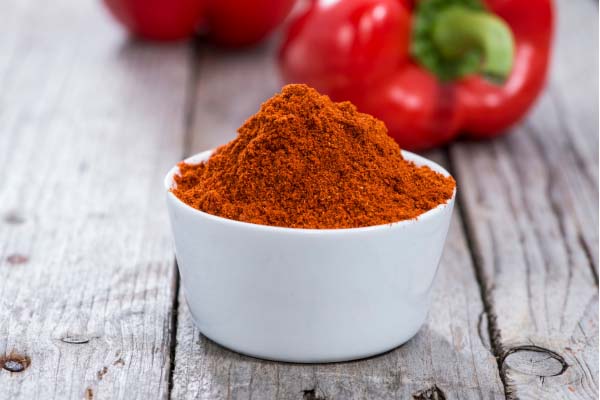
Paprika (regular or smoked paprika) is an exceptional chili powder substitute, especially in dishes with a milder, sweeter flavor. Derived from ground bell peppers or chili peppers, paprika offers a similar color and a subtle earthiness, with a sweet or smoky undertone depending on the variety.
When substituting paprika for chili powder, use it in a one-to-one ratio for a comparable color and a gentle warmth. Paprika is particularly effective in recipes that benefit from a rich, warm flavor without the intense heat of chili powder. It shines in chicken wings, lentil soups, curry, and rubs for meats and vegetable dishes, adding depth and color while keeping the spice level mild.
Smoked paprika can be used to add a smoky dimension, closely mimicking the complexity of chili powder. However, it's important to note that paprika lacks some of the intricate flavors of chili powder, such as cumin and garlic, so you might want to add these spices separately to achieve a more layered taste profile.
Cayenne Pepper
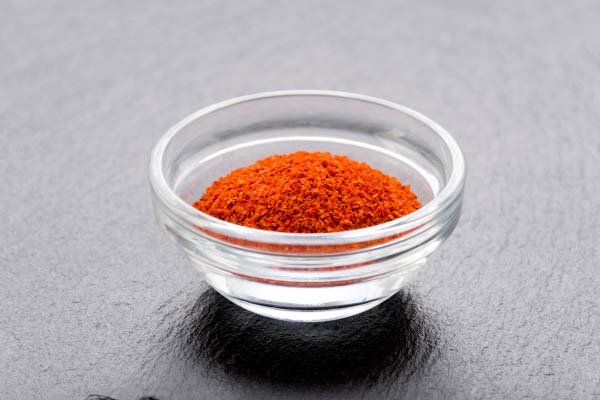
Cayenne pepper is an excellent chili powder substitute when the primary goal is to infuse heat into a dish. While it lacks the complex blend of spices found in traditional chili powder, cayenne pepper brings a clean, sharp spiciness that can invigorate a recipe.
Due to its higher heat level than chili powder, it's advisable to start with about half the amount and adjust to taste. This substitution is especially effective in dishes with a central spicy component, such as spicy sauces, marinades, and rubs for meats.
However, it's important to remember that cayenne pepper doesn't bring the additional flavors like garlic, cumin, and oregano that are present in chili powder, so you might need to add these separately to achieve a more complex flavor profile.
Hot Sauce
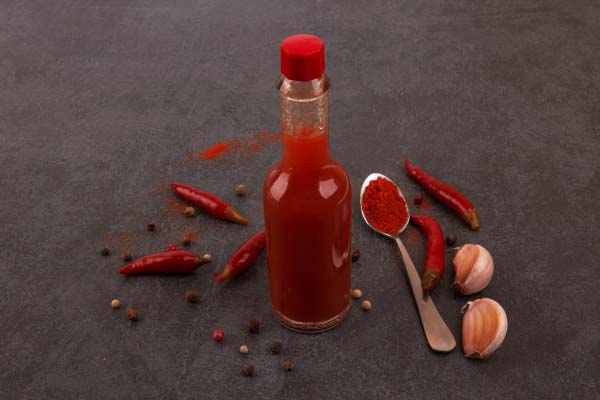
Hot sauce is a unique and versatile chili powder substitute, particularly in recipes where a liquid component can be seamlessly integrated. Unlike the dry, earthy essence of chili powder, hot sauce offers a tangy, vinegary kick, along with varying levels of heat depending on the brand and type used.
When substituting hot sauce for chili powder, it's important to consider its liquid consistency and stronger acidic flavor. Start with a small amount, such as a teaspoon for every tablespoon of chili powder, and adjust according to taste and the desired spice level. Hot sauce works exceptionally well in soups, stews, marinades, and sauces where its liquid form can easily blend into the dish. It's especially suitable for recipes that can benefit from a touch of acidity and a straightforward spicy profile.
Ground Cumin
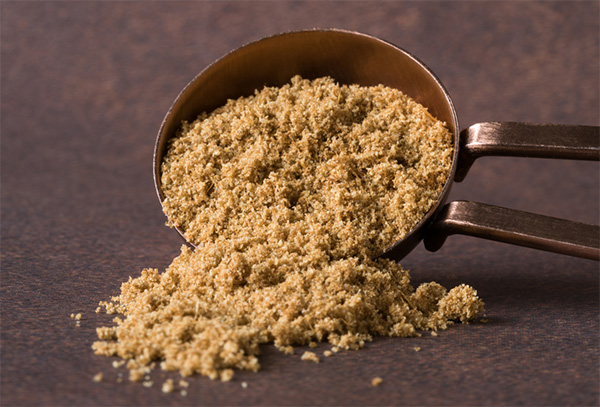
Ground cumin is an excellent chili powder substitute, particularly in recipes where a warm, earthy undertone is desired. While it lacks the heat of chili powder, cumin shares a similar depth of flavor, making it a suitable alternative in spice blends and savory dishes.
When using ground cumin as a substitute, it's advisable to start with about half the amount of chili powder called for since its flavor is potent and distinct. Cumin is especially effective in dishes like tacos, chili, and other Tex-Mex or Middle Eastern cuisines where its robust, slightly smoky taste can stand in for the complex notes of chili powder. It also makes an excellent inclusion in rubs for both meats and vegetables.
However, since cumin alone doesn't provide the heat that chili powder does, combining it with a pinch of cayenne pepper can help achieve a more balanced flavor profile, closely mimicking the multifaceted nature of chili powder.
Homemade Chili Powder
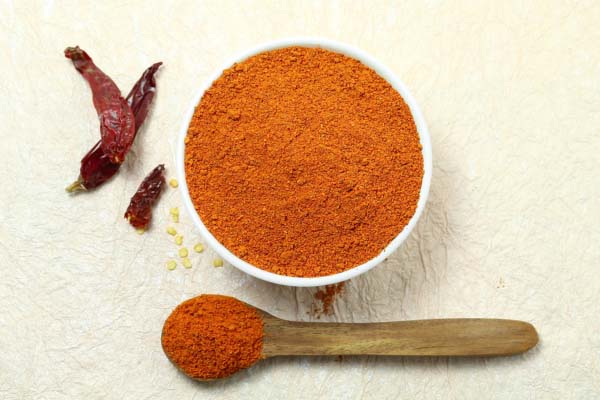
Creating your own chili powder blend can be a great chili substitute. You can tailor it to your preference with a homemade chili powder substitute. Consider combining ground chili peppers, cumin, onion powder, garlic powder, and oregano in varying proportions. This homemade chili powder recipe is arguably the best substitute for chili powder, as it closely replicates the original's complex flavor profile. This DIY approach allows for personalization in heat and flavor balance.
Typically, you can use equal parts of each spice and adjust to taste. If a spicier mix is desired, increase the ground chili peppers or add extra cumin for more depth. This blend excels in recipes where chili powder is a key ingredient, like chili, stews, and meat rubs, as it offers a similar depth of flavor and heat.
The homemade chili powder mix is particularly useful for controlling the spice level or avoiding additional additives in commercial chili powders. By adjusting the proportions of each spice, you can create a blend that caters to your specific flavor preferences, whether you're looking for more warmth from the cumin or a sharper bite from the garlic powder.
Chipotle Powder

Chipotle powder, made from dried and smoked jalapeño peppers, is an outstanding substitute for chili powder, particularly for those seeking a smoky depth in their dishes. Its rich, smoky flavor, combined with a moderate heat level, captures the essence of traditional chili powder while adding a distinctive twist.
When substituting chipotle powder for chili powder, use it sparingly at first — about half the amount — as its smoky flavor is more intense. This substitute is ideal in recipes where a deep, smoky heat complements the dish, such as in barbecue sauces, chili, and meat rubs. It's particularly effective in Mexican and Southwestern cuisines, where its unique flavor can elevate the taste profile.
However, due to its pronounced smokiness and spiciness, chipotle powder might not suit dishes requiring standard chili powder's milder, more nuanced flavors. Blending it with milder spices like paprika or cumin can help achieve a more balanced, chili powder-like flavor profile.
Ancho chile powder
Ancho chile powder, made exclusively from dried and ground poblano peppers, is an exceptional substitute for chili powder, particularly for those who prefer a milder, subtly sweet heat. Unlike regular chili powder, a blend of various spices, ancho chile powder offers a singular but complex flavor profile characterized by its mild warmth and hints of dried fruit, coffee, and tobacco.
When substituting ancho chile powder for chili powder, use it in equal measure, as its mildness balances well against the typical spiciness of chili powder. This substitute is particularly effective in dishes where a nuanced, deep flavor is desired without overwhelming heat, such as in mole sauces, stews, and meat rubs.
Crushed Red Pepper Flakes
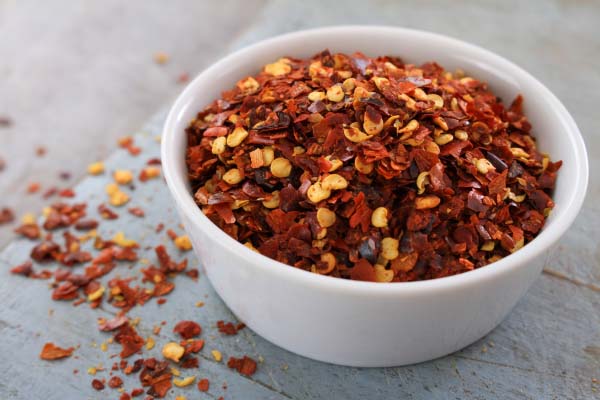
Crushed red pepper flakes offer a vibrant and fiery alternative to chili powder, ideal for those who appreciate a more pronounced heat in their dishes. Comprising coarsely ground dried chili peppers, these flakes provide a straightforward spicy kick, though they lack the complex blend of flavors present in chili powder.
When substituting, use about half the amount of crushed red pepper flakes compared to chili powder, adjusting to your heat tolerance. This substitute is particularly effective in recipes where a bold, spicy character is the main goal, such as in spicy pasta dishes, pizza toppings, and stir-fries. It's also a great addition to marinades and sauces, where its texture and heat can be a feature rather than a background note.
However, for dishes that require the nuanced flavors of chili powder, like stews or chili recipes, you might want to add complementary spices like cumin or garlic powder and red pepper flakes to achieve a more balanced and layered flavor profile.
Taco Seasoning
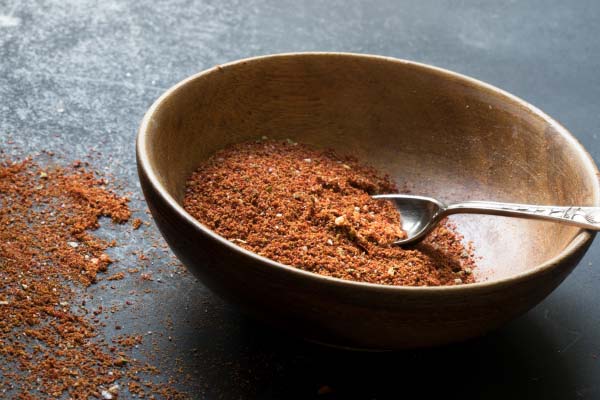
Taco seasoning, a dynamic blend of spices commonly used in Mexican cuisine, is an excellent chili powder substitute. This pre-mixed seasoning typically includes ingredients like cumin, garlic powder, onion powder, and sometimes crushed red pepper or paprika, offering a flavor profile similar to chili powder with additional layers of taste.
When substituting taco seasoning for chili powder, use it in equal amounts. This replacement works well in dishes where various spices can enhance the overall flavor, such as in tacos, fajitas, soups, and stews. Taco seasoning is particularly useful in recipes that call for a Mexican or Southwestern flair, as its combination of spices harmonizes well with these cuisines.
Chili Flakes
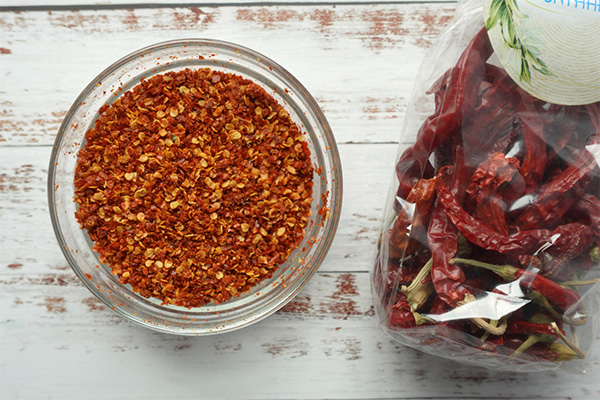
Chili flakes can be a great substitute for chili powder in recipes that call for a spicy kick. While chili powder contains a blend of ground chili peppers and other spices like cumin and garlic powder, chili flakes are purely crushed dried chili peppers, offering a more straightforward heat.
To substitute, use chili flakes in a smaller quantity, starting with half of what the recipe calls for chili powder, and adjust to taste. This substitution is best in dishes where the texture and pure chili flavor can be appreciated, such as in sauces, marinades, and sprinkled on soups, pizzas, or pasta, providing a direct heat and visual appeal with the flakes.
Chipotle chile powder
Chipotle chile powder, made from dried and smoked jalapeño peppers, offers a distinctive, smoky flavor and heat, making it a fantastic substitute for regular chili powder in various dishes.
When using chipotle powder as a substitute, start with half the amount of regular chili powder called for in the recipe, as its smoky intensity can be more pronounced. It's especially effective in recipes whose unique flavor complements the dish, such as Mexican cuisine, stews, BBQ rubs, and sauces. Adjust the quantity based on your preference for smokiness and heat, as Chipotle can significantly alter the flavor profile of your dish.
